I’d only shot Cinestill 800t once. I was given a roll by a friend over a year ago and was petrified I’d screw it up. Eventually I bit the bullet, loaded it into my trusty OM10 fitted with a nifty 50 and took a sunset walk around London’s Canary Wharf.
To get the best out of the roll I bracketed each shot by a stop or two either way but still I didn’t get the results I’d wanted or expected. To be frank I screwed it up by over exposing the images. Even though I had bracketed almost each shot it looks like I started a bit slow and each subsequent shot was even slower.
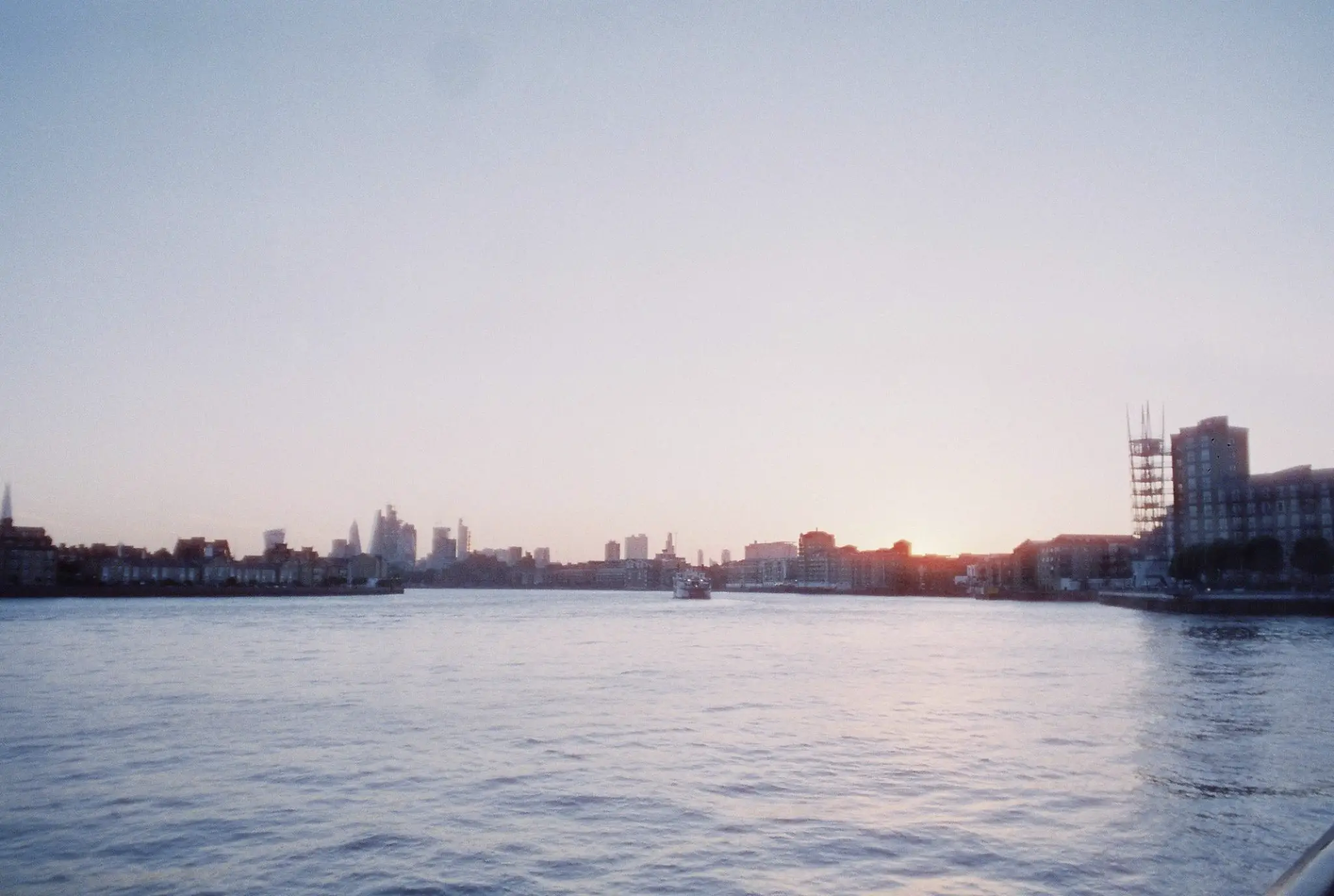
I told myself that the next time I would try under exposing one shot. Next time. All over social media other people seemed to be getting awesome shots on Cinestill 800T, portraits, city scenes, architecture. Each image with its characteristic red halation and quirky grain. Despite the wealth of images there were no guides about how to get the best out of it. I had spoken to some people via DM on Instagram and Twitter about their experiences. What I found (apart from the fact that my photography is awful) is that many users have their own methods of shooting it and each method would have different results. Some shoot it at 500 ISO and others use a filter. Everyone has a budget and on mine another foray into shooting Cinestill 800T would be bit of an expensive gamble so I just tried to forget about it. For now. I stuck to ColorPlus.
Nearly a year later and among some other film from those wonderful people at Analogue Wonderland I finally had another roll of Cinestill 800T.
I regarded the black film case with a sense of excitement and the question of if I would be able to exorcise my demon. I had a trip planned to London-On-Sea, also known as Brighton and thought I could shoot it there. This time I would be using a Minolta X-300S. Also in the camera bag would be my Sigma 28-70mm zoom lens (not fast but handy) and my 50mm f/1.4 Rokkor prime lens. I also took a tripod.
The X-300s is fast becoming one of my favourite SLRs. It’s no way near as sexy my Canon AE1-P or as lightweight as my OM10 but it’s sleek, sturdily built and can shoot aperture priority which is nice.
After the sun went down I left the house and made my way towards the pier and took a few casual shots of shop fronts taking care not to over expose the frames. I set the camera ISO to 800 and treated it more like a high speed film and trusted the Minolta’s built in meter.
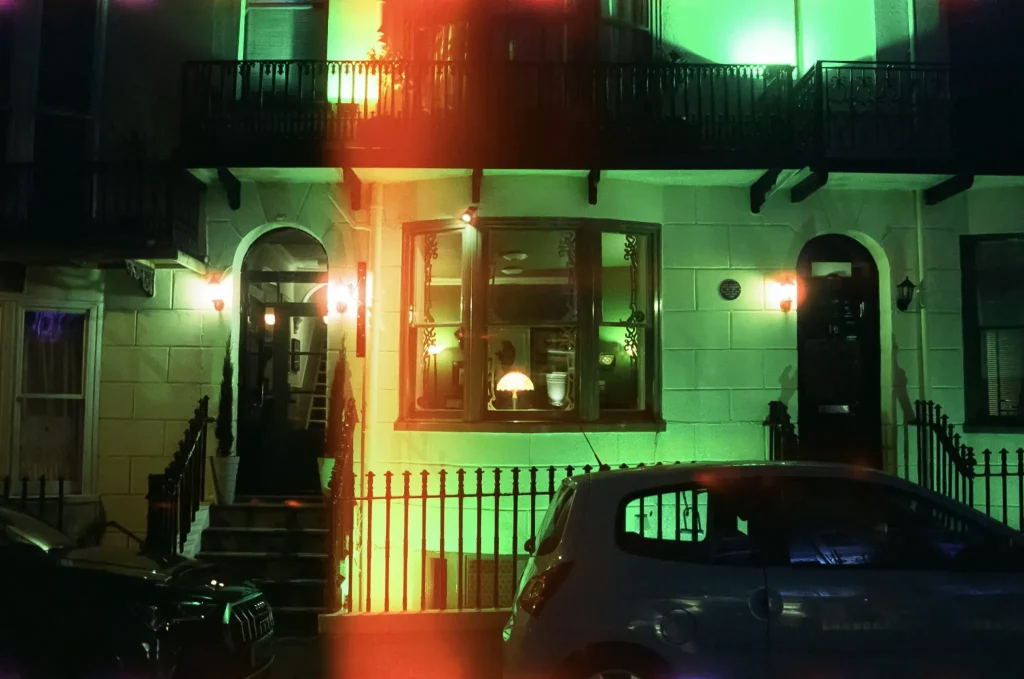
Cinestill is known for the red halation around white lights but with lights of varied colours I’d say it still looks attractive. The halation is less pronounced around the blue lights than around red and white lights but I think it add an element of variety to this image.
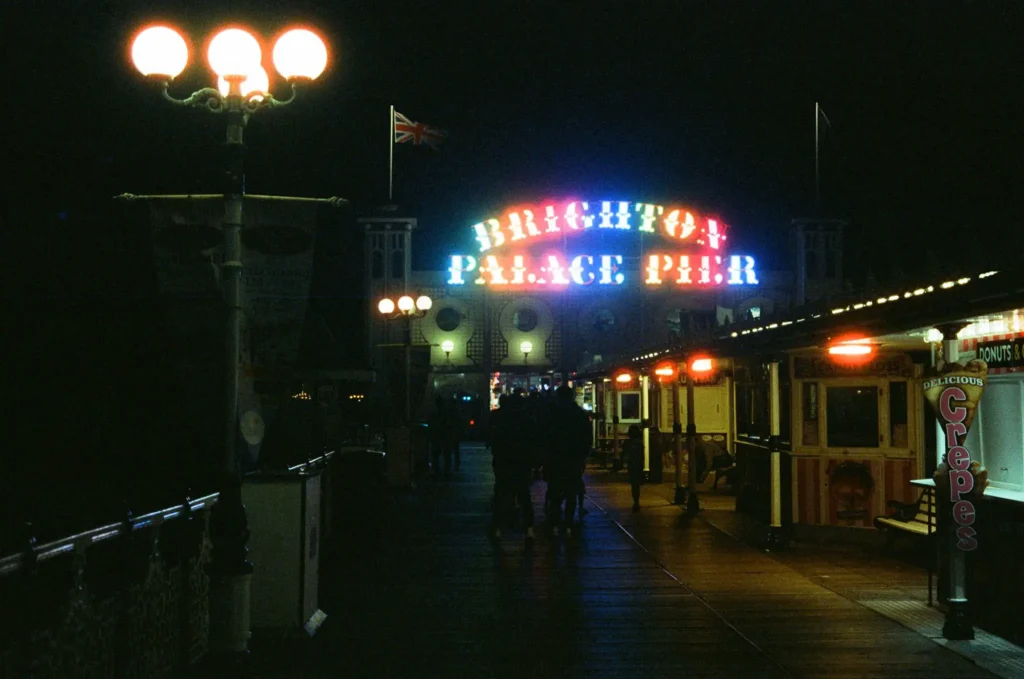
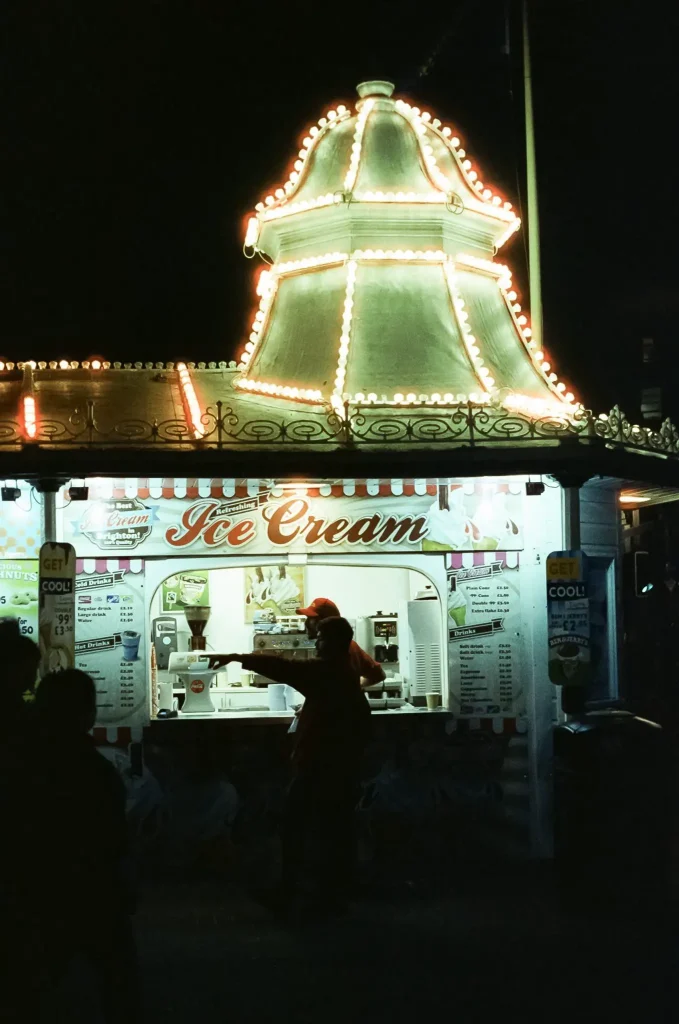
It was getting late and instead of wasting the remaining frames I decided to save them for my return to London. Real London. While out in Southgate I took the Minolta X300s to finish the last few shots.
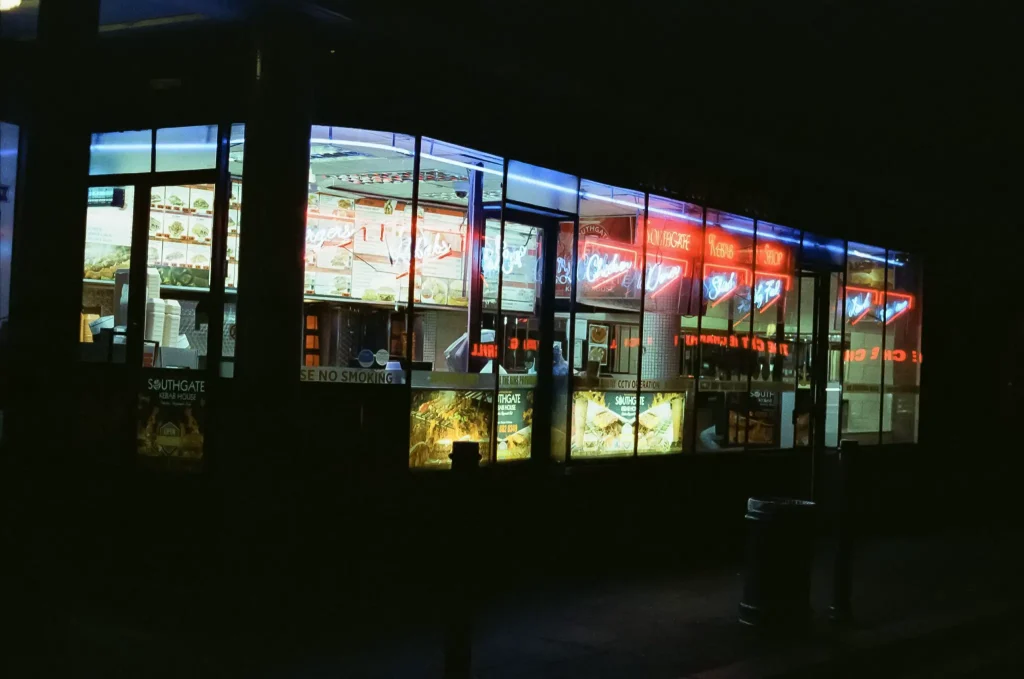
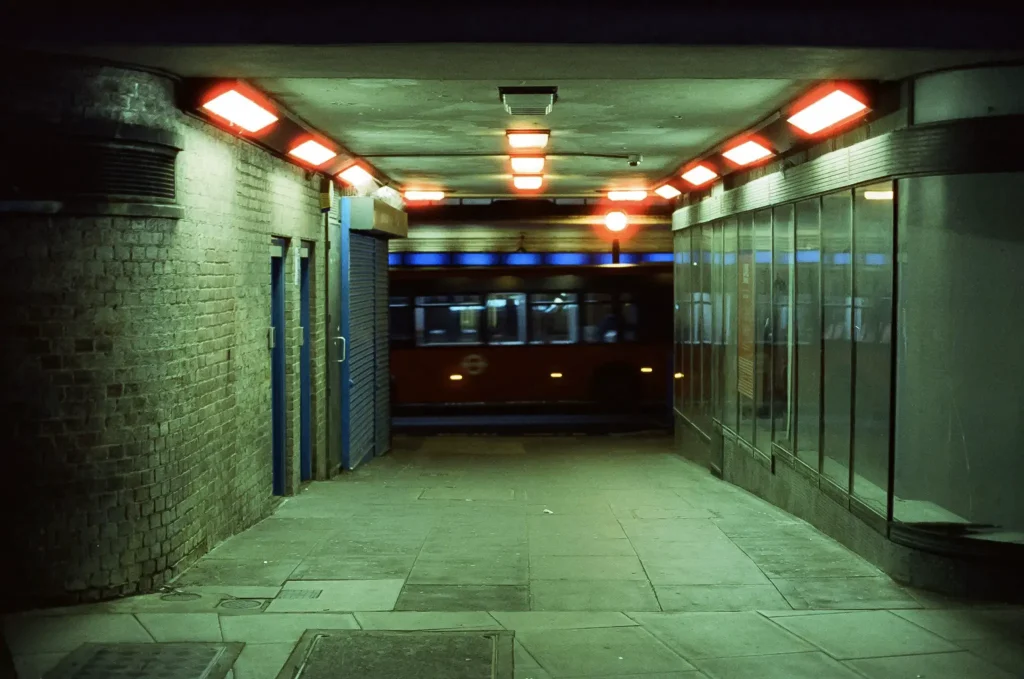
I really like the results of this crazy film. It has so much potential. I chose to shoot it at box speed, with the UV filter my lenses normally have on them so nothing really fancy. The light meter in the Minolta did a great job and really simplified the process. I can’t wait to shoot it again. Next time I’ll use some neutral density filters so I can use smaller apertures and extend the exposure times without blowing out the highlights.
You can find a curated collection of thought provoking analogue art and info about a range of workshops and photo walks on my Instagram – londoncameraproject
Share this post:
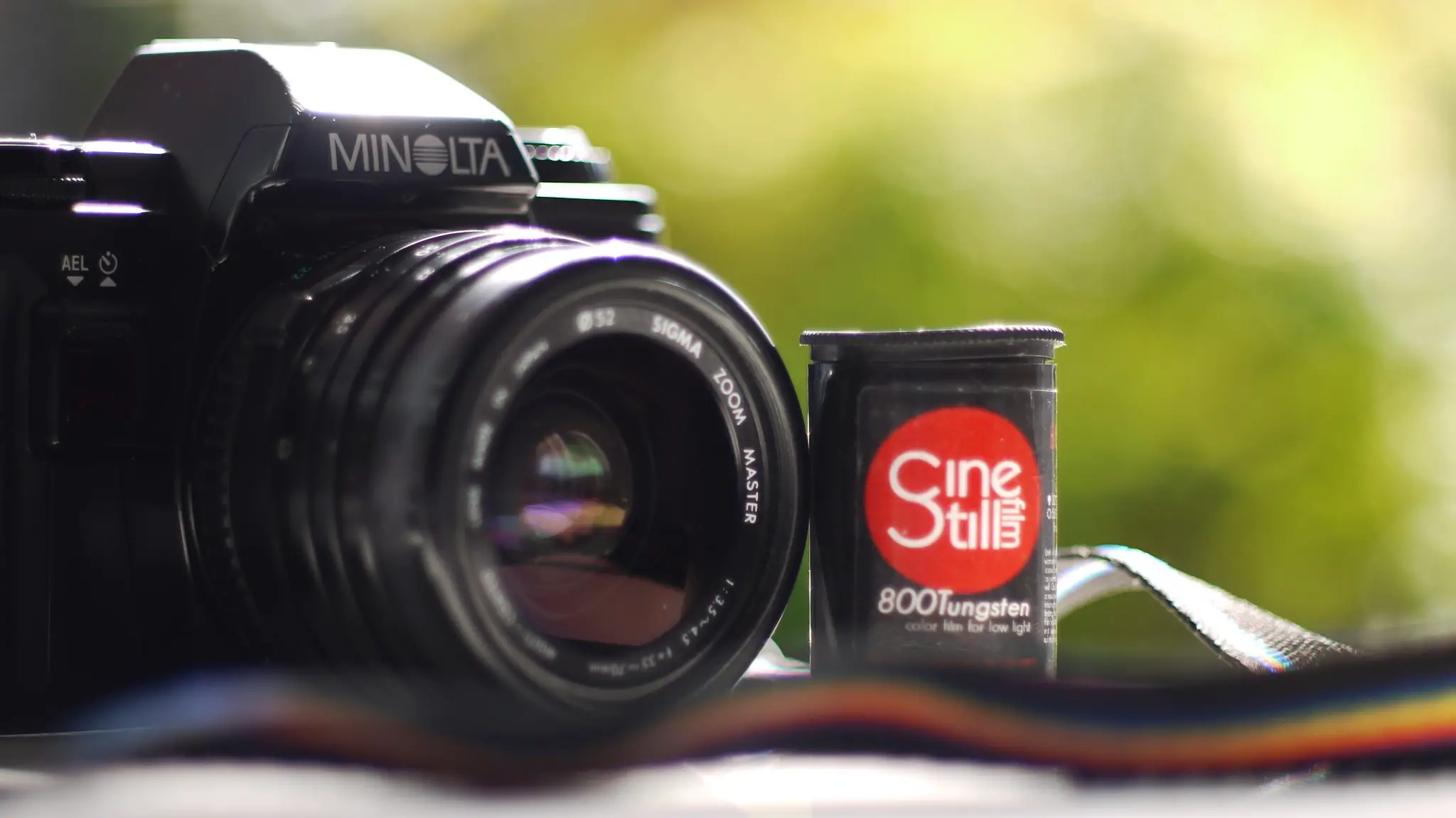








Comments
Bernhard on 5 frames of Cinestill 800t in Two Londons – By Robert
Comment posted: 08/09/2019
Nice shots from London.
Regards Bernhard
Comment posted: 08/09/2019
Bill Thoo on 5 frames of Cinestill 800t in Two Londons – By Robert
Comment posted: 08/09/2019
Comment posted: 08/09/2019
Bent_Brent on 5 frames of Cinestill 800t in Two Londons – By Robert
Comment posted: 09/09/2019
Comment posted: 09/09/2019
Huss on 5 frames of Cinestill 800t in Two Londons – By Robert
Comment posted: 09/09/2019
Comment posted: 09/09/2019